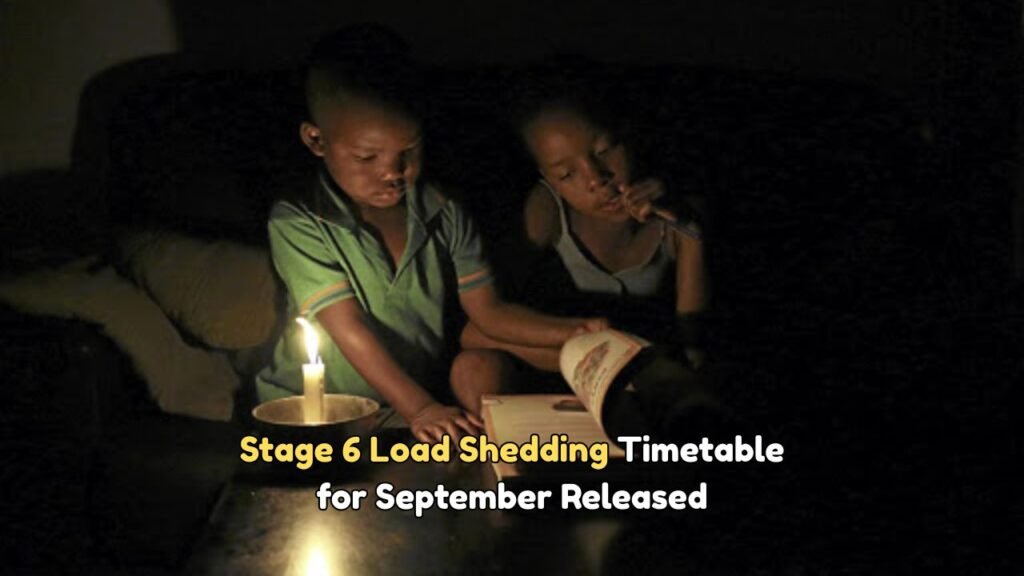Eskom Stage 6 Power Cuts: In a significant announcement, Eskom has revealed plans for Stage 6 power cuts scheduled to take place in September 2025. This development has sparked widespread concern among South Africans, as the increased level of load shedding could have far-reaching implications for businesses and households across the nation. As the country braces for this unprecedented level of power interruptions, understanding the intricacies of the load shedding schedule and its impact is crucial. Load shedding has been a recurring issue in South Africa, but the escalation to Stage 6 indicates a pressing need to manage the national power grid more effectively. Let’s explore what Stage 6 power cuts entail and how they might affect you, your community, and the wider economy.

Understanding Eskom’s Stage 6 Load Shedding Schedule for September 2025
Stage 6 load shedding represents a critical phase in Eskom’s power management strategy, designed to prevent the total collapse of the power grid. This stage requires the utility to shed 6,000 megawatts of electricity, significantly impacting daily life and business operations. The September 2025 schedule outlines a structured blackout plan, where areas will experience power cuts more frequently and for longer durations than in previous stages. Typically, Eskom implements load shedding in rotational blocks, which means areas can expect to be without power for up to four hours at a time, potentially more than once a day. This drastic measure is a response to the ongoing challenges of maintaining a stable electricity supply in the face of aging infrastructure, insufficient maintenance, and financial constraints faced by the utility provider. South Africans are urged to stay informed about the schedule through Eskom’s official channels and local news outlets to better prepare for the outages.
Implications of Prolonged Power Cuts on South African Businesses
With the advent of Stage 6 power cuts, South African businesses are set to face significant operational challenges. Prolonged and frequent outages can disrupt production lines, affect service delivery, and increase operational costs due to the need for alternative power sources such as generators. Small to medium enterprises, which may not have the financial resources to invest heavily in backup systems, are particularly vulnerable. The retail sector could see a loss in revenue due to reduced trading hours and spoilage of perishable goods, while industries reliant on continuous power supply, like manufacturing and IT, might experience severe productivity losses. Additionally, the uncertainty surrounding power availability can affect investor confidence, potentially deterring new investments and slowing down economic growth. For businesses, adapting to this reality may involve implementing energy-saving measures, investing in solar power solutions, or adjusting operational hours to minimize the impact of load shedding.
How Households Can Cope with Eskom’s Stage 6 Power Cuts
For households, adapting to Stage 6 load shedding requires strategic planning and resourcefulness. Families should consider investing in alternative energy sources, such as solar panels or battery storage systems, to ensure essential appliances continue functioning during outages. Simple measures like stocking up on non-perishable foods, ensuring adequate lighting with rechargeable lamps, and having a well-stocked first aid kit can make a significant difference. Additionally, keeping informed about the load shedding schedule allows families to plan around power cuts, minimizing disruption to daily activities such as cooking, studying, or working from home. Communities can also benefit from coming together to support each other, sharing resources and information to better cope with the challenges posed by frequent power interruptions. Furthermore, understanding energy-saving practices can help households contribute to reducing the overall strain on the national grid, potentially easing the severity of load shedding in the long run.
The Long-Term Outlook for Eskom and South Africa’s Energy Sector
As Eskom navigates the complexities of maintaining a stable power supply, the long-term outlook for South Africa’s energy sector remains a topic of intense discussion. The persistent need for load shedding underscores the urgency for reform and investment in renewable energy solutions. Government initiatives aimed at diversifying the energy mix, encouraging private sector involvement, and enhancing infrastructure resilience are crucial steps toward achieving energy security. However, these efforts require significant capital, policy support, and time to implement effectively. For Eskom, addressing internal challenges such as financial management, operational inefficiencies, and maintenance backlogs is essential to restoring public confidence and ensuring a reliable power supply. As South Africa moves towards a more sustainable and diversified energy future, the transition will need to balance economic growth, environmental considerations, and social equity to ensure that all citizens benefit from a stable and affordable energy supply.



